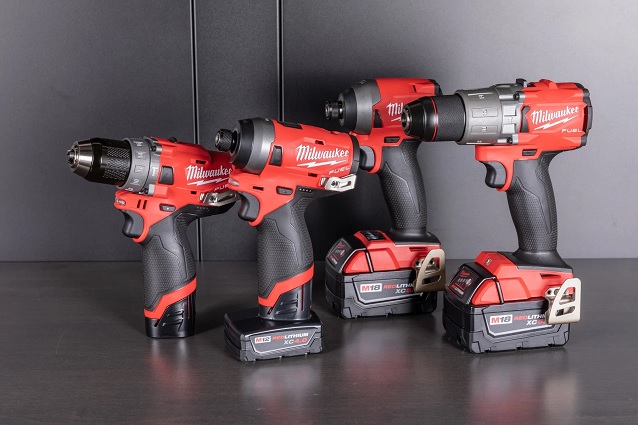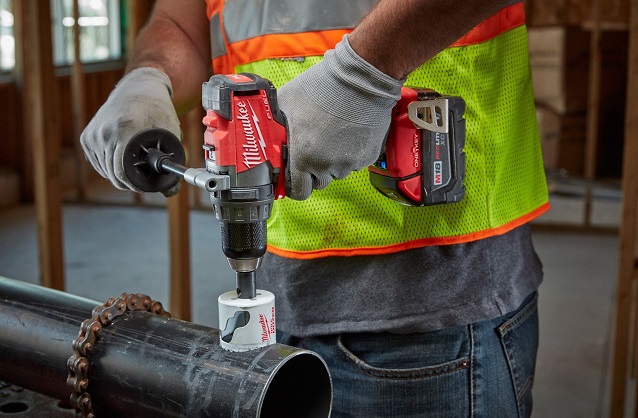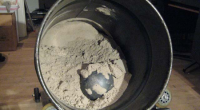Milwaukee Drills Guide: Where Purpose Meets Execution
Drills are one of those tools no toolbox can do without. They’re used in home repairs, DIY projects and demanding professional work. And they’re good at what they do, no matter if it’s drilling holes, loosening or tightening screws, or clearing materials.
With all the recent advances in technology, it’s no surprise that there are now numerous types of drills available on the market. Going for established names ensures high drill quality and getting the job done without fuss. If you’re looking to buy Milwaukee drills in particular, then you’re treated to an extensive drill and accessory lineup that covers all types of jobs and in any application.
What Are the Different Types of Milwaukee Drills?

What you want the drill to do, the materials you’re working on, and how often it will be used are just some of the things to take into account. The classification is often based on the drill’s application as well as its general features.
Drill Drivers
Light-duty applications around the house are covered with a drill driver. This tool can be used both as a drill and powered screwdriver. Drill drivers are lightweight, compact, easy to use, and can handle most types of wood and metals. They’re also reliable and have decent bouts of power and long run times (in newer cordless variants). A prime and inexpensive example is the Milwaukee 2803-20 M18 Fuel Drill/Driver.
Impact Drivers
These are in essence heavy-duty screwdrivers used in repetitive or large-scale projects. They use the rotational force of standard drill drivers, and downward force similar to what you’d find in hammer drills to drive screws and bolts. The high torque helps relieve the impact on wrists and makes work easier and faster. A decent Milwaukee impact driver is the 2553-20 M12 Fuel Hex Impact Driver.
Hammer Drills
Where drill drivers struggle, hammer drills thrive. These are heavy-duty drills intended for boring into concrete, stone and brick. They do this will the hammer mechanism that vibrates the attached drill bit back and forth, with the bit spinning. The Milwaukee 2904-20 M18 Fuel ½” Hammer Drill is a newer release.
SDS Rotary Hammer and Demolition Drills
These are the bigger, tougher cousins of hammer drills. The hammer action is improved with the Slotted Drive System that uses a piston to fire the drill bit forward and pull it back. This creates more impact, allowing for better efficiency and speed when drilling into tough and thick materials.
The Milwaukee 2912-20 M18 Fuel SDS Plus Rotary Hammer Drill is a worthy example. Related to rotary hammer drills, but much more powerful and with a bigger footprint are demolition drills. These use chisel-like bits to break up tiles, plasterboard and masonry, among other materials. The corded Milwaukee 5446-21 SDS Max Demolition Hammer is one such drill.
The Corded vs. Cordless Debate
Besides different applications that have led to different types of drills, there are other factors to consider. The first is whether you need mobility and a drill that can be used anywhere. Cordless drills, powered by rechargeable batteries, have largely replaced their corded counterparts.
Brands like Milwaukee have invested considerable funds and effort in increasing available power, drill speeds, run times, and overall tool efficiency. Today the M18 and M12 tool lineup offer an extensive range of drills, with multiple models. Output is comparable, if not improved over corded drills, with the added benefit of portability.
This allows tools to be used where mains outlets are just not there, like new construction sites. And there are no straggling cords, nor any safety hazards that come with them. Of course, Milwaukee still makes corded drills (like the Milwaukee 5446-21 SDS Max Demolition Hammer mentioned above), but cordless placements like the 2912, 2717, and 2713 drills are more than up to the task.
Yes, there are slight price premiums over corded drills, but the convenience, portability, and compactness more than make up for that. Milwaukee, as with other toolmakers, allows batteries to be swapped between different tools besides drills, and this provides another level of usability.
Essential Drill Features

When setting out to buy Milwaukee drills, or drills from another cordless tool manufacturer for that matter, features are what determine the overall price. Torque, drill speed and RPM are factors that determine the speed and ease with which you complete the project. The Milwaukee drill is the preferred option over other brands in this respect as it offers some of the highest figures in each category.
RPMs and speeds in their drill drivers, for instance, are variable and reach 2000 RPM in the higher setting. Torque figures of 1200 pounds per square foot make light work of heavy loads, like removing over-tightened or frozen screws or bolts over a larger area. The company even boasts that their drills are twice as fast and have a 60 percent advantage in overall power over drills from other makers.
Size and overall weight also matter. Lighter drills are easier to handle and offer better control and precision. And drill makers strive to reduce weight and footprints where possible. In addition, safety and grip levels with correctly sized and damped handles provide for a more delightful experience, particularly in extended usage.
Similarly, the transition from older brushed to newer brushless motors is also essential, as these along with newer batteries with longer runtimes, impact how long each cordless drill can be used. Bear in mind that drills may be sold as bare units and without batteries. The majority of retailers, though, offer bundles, that besides batteries and chargers, also include necessary items like interchangeable chuck attachments when changing out drill bits.



